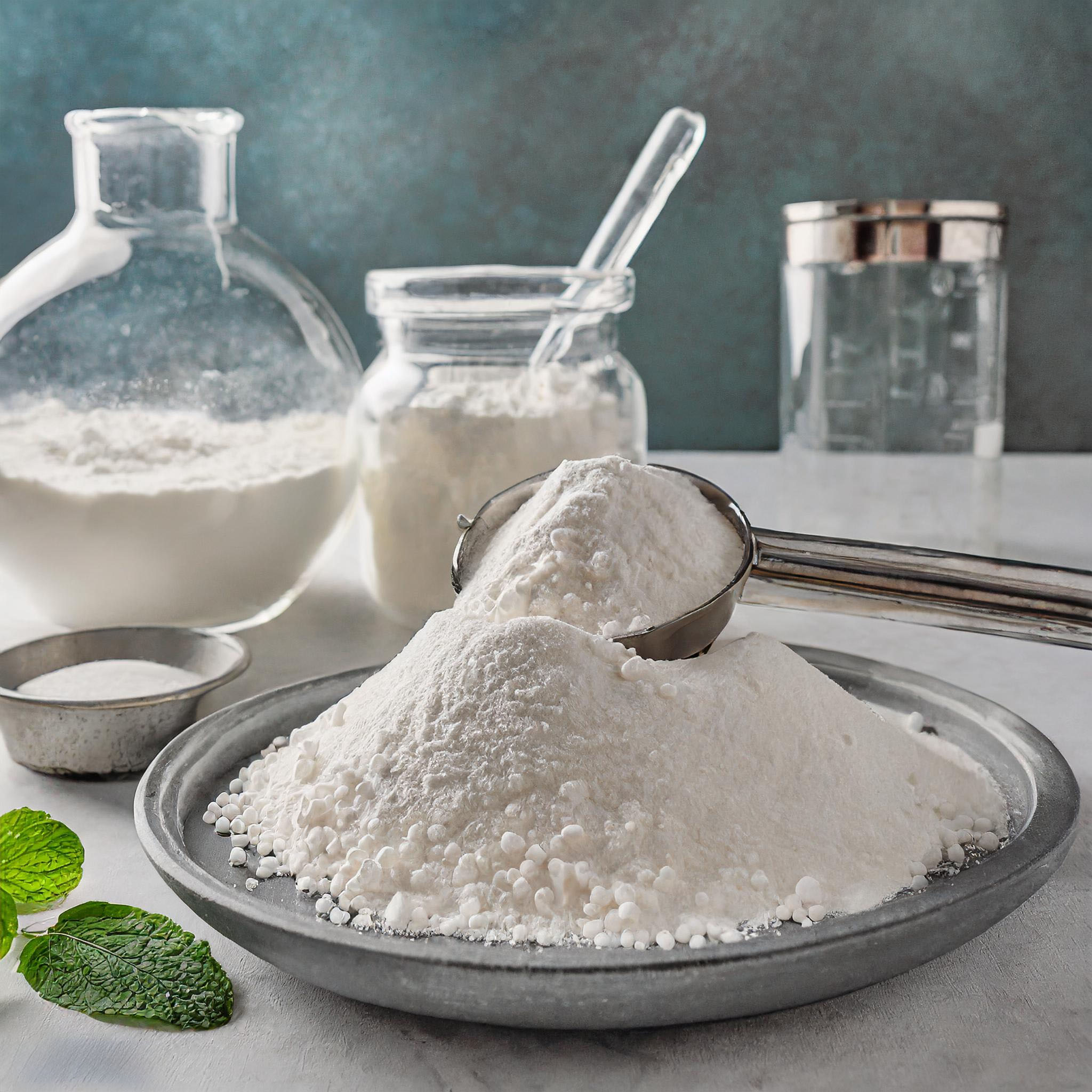Let's face it, xanthan gum is a kitchen hero—but what happens when you run out of it? Or worse, what if you're avoiding it for dietary or health reasons? Don’t panic, because we’ve got you covered. Whether you're gluten-free, paleo, or just looking for an alternative thickener, there are plenty of great substitutes for xanthan gum that can save your day (and your recipes). In this guide, we’ll break down the best options, their pros and cons, and how to use them effectively.
Now, before we dive in, let’s talk about why xanthan gum is so popular in the first place. It’s a powerful thickener and stabilizer that adds texture and structure to baked goods, sauces, and dressings. But not everyone loves it—some people avoid it due to allergies, sensitivities, or simply because they’re trying to keep things more natural. That’s where our list of substitutes comes in handy.
Whether you’re whipping up gluten-free bread, making a creamy salad dressing, or experimenting with vegan recipes, there’s no reason to let a lack of xanthan gum stop you. We’ve done the research, tested the alternatives, and are ready to share the goods with you. So grab your apron, and let’s get into it!
- Watch Free Movies Now Legal Streaming Downloads In 2024
- Alicerosenbum Onlyfans
- Why Moviesming Is The Ultimate Destination For Movie Lovers
- Neil Flynn Wife Marriage Net Worth The Truth Revealed
- Aagmaal Gives The Ultimate Guide To Understanding This Generous Movement
Table of Contents
- What is Xanthan Gum?
- Why Substitute Xanthan Gum?
- Best Substitutes for Xanthan Gum
- Psyllium Husk: A Natural Thickener
- Guar Gum: A Versatile Option
- Gelatin: Perfect for Baking
- Cornstarch: Easy to Find
- Arrowroot Flour: Gluten-Free Magic
- Flaxseed Meal: Nutritious and Binding
- Tips for Substituting Xanthan Gum
- Conclusion: Your Go-To Guide for Xanthan Gum Substitutes
What is Xanthan Gum?
First things first, let’s break down what xanthan gum actually is. Xanthan gum is a polysaccharide produced by fermenting sugar with the bacteria Xanthomonas campestris. Yeah, it sounds like science—and it kinda is. But in layman's terms, it’s a super-effective thickener and stabilizer used in everything from gluten-free baking to salad dressings and even ice cream. It’s gluten-free, vegan, and works wonders in binding ingredients together.
But here’s the deal: not everyone loves it. Some people have sensitivities to it, while others just prefer natural alternatives. Plus, if you're on a budget, xanthan gum can get pricey. That’s why finding a good substitute is key.
Why Substitute Xanthan Gum?
There are plenty of reasons why someone might want to substitute xanthan gum. For starters, some folks are allergic or sensitive to it. Others might be avoiding it for dietary reasons, like following a paleo or keto diet. And let’s not forget the cost factor—xanthan gum isn’t exactly cheap, especially if you’re using it regularly.
- Mike Rowes Love Life Dating Girlfriends Relationships Exposed
- Bollyflix 2025 Your Guide To Bollywood Movies Streaming
- Vivienne Goldstein Brett Goldstein The Untold Story Of A Hollywood Power Couple
- Aditi Mistry Latest Updates Videos News Must See
- Top Sophie Rain Photos Videos
Additionally, some people just prefer using more natural ingredients in their cooking and baking. Whatever your reason, there are plenty of great alternatives that can do the job just as well—or even better.
Best Substitutes for Xanthan Gum
Now that we know why you might want to swap out xanthan gum, let’s talk about what you can use instead. Here’s a rundown of the top substitutes, along with their benefits and how to use them:
Psyllium Husk: A Natural Thickener
Psyllium husk is a fiber-rich alternative that works wonders in gluten-free baking. It helps bind ingredients together and adds structure to baked goods. Plus, it’s packed with fiber, making it a great choice for those looking to boost their nutrient intake.
How to Use: Replace xanthan gum with psyllium husk at a 1:2 ratio. For example, if your recipe calls for 1 teaspoon of xanthan gum, use 2 teaspoons of psyllium husk. Be sure to mix it well with liquid to avoid clumping.
Guar Gum: A Versatile Option
Guar gum is another popular substitute for xanthan gum. It’s made from the guar bean and is often used in gluten-free baking, sauces, and dressings. It’s less expensive than xanthan gum and works similarly as a thickener and stabilizer.
How to Use: Use guar gum in a 1:1 ratio with xanthan gum. Start with a small amount and adjust as needed, as guar gum can be more potent than xanthan gum.
Gelatin: Perfect for Baking
Gelatin is a great option for those who aren’t vegan or vegetarian. It’s derived from animal collagen and is an excellent binder for baked goods. It also adds a chewy texture to gluten-free bread and cakes.
How to Use: Use unflavored gelatin in a 1:1 ratio with xanthan gum. Make sure to bloom the gelatin in cold water before mixing it into your recipe.
Cornstarch: Easy to Find
Cornstarch is a pantry staple that can be used as a thickener in sauces, gravies, and soups. While it’s not ideal for baking, it works great for recipes where you need a thickener but not a binder.
How to Use: Use cornstarch in a 1:2 ratio with xanthan gum. For example, if your recipe calls for 1 teaspoon of xanthan gum, use 2 teaspoons of cornstarch. Mix it with a little water before adding it to your recipe to prevent clumping.
Arrowroot Flour: Gluten-Free Magic
Arrowroot flour is a gluten-free thickener that works well in sauces, soups, and desserts. It’s neutral in flavor and has a smooth texture, making it a great alternative to xanthan gum.
How to Use: Replace xanthan gum with arrowroot flour at a 1:1 ratio. Be sure to mix it with a little water before adding it to your recipe to prevent clumping.
Flaxseed Meal: Nutritious and Binding
Flaxseed meal is a nutrient-rich alternative that works well as a binder in gluten-free baking. It adds a nutty flavor and a boost of omega-3 fatty acids to your recipes.
How to Use: Replace xanthan gum with flaxseed meal at a 1:3 ratio. For example, if your recipe calls for 1 teaspoon of xanthan gum, use 3 teaspoons of flaxseed meal mixed with water to form a slurry.
Tips for Substituting Xanthan Gum
Substituting xanthan gum can be a bit tricky, but with a few tips and tricks, you’ll be a pro in no time. Here are some things to keep in mind:
- Experiment with Ratios: Every substitute is different, so don’t be afraid to experiment with ratios to find what works best for your recipe.
- Consider Texture: Some substitutes may alter the texture of your final product, so keep that in mind when choosing an alternative.
- Start Small: When using a new substitute, start with a small amount and adjust as needed. This will help you avoid over-thickening or altering the flavor of your dish.
- Know Your Recipe: Some recipes may require a specific type of substitute. For example, if you’re making a salad dressing, you might want to use guar gum instead of psyllium husk.
Conclusion: Your Go-To Guide for Xanthan Gum Substitutes
There you have it—your ultimate guide to substituting xanthan gum. Whether you’re avoiding it for dietary reasons, budget constraints, or simply prefer natural alternatives, there are plenty of great options out there. From psyllium husk to flaxseed meal, each substitute has its own unique benefits and uses.
So next time you find yourself without xanthan gum, don’t sweat it. Grab one of these substitutes and get creative in the kitchen. And remember, practice makes perfect—so don’t be afraid to experiment and find what works best for you.
Now it’s your turn—what’s your favorite substitute for xanthan gum? Let us know in the comments below, and don’t forget to share this article with your fellow bakers and cooks. Happy cooking!
- Balthazar Video Viral The Untold Story Behind The Sensation
- Tubitv Pro Alternatives
- 4 Movierulz Kannada New 2025
- Latest On Ullu Web Series Free Content More
- Aagmaalgive Alternatives


